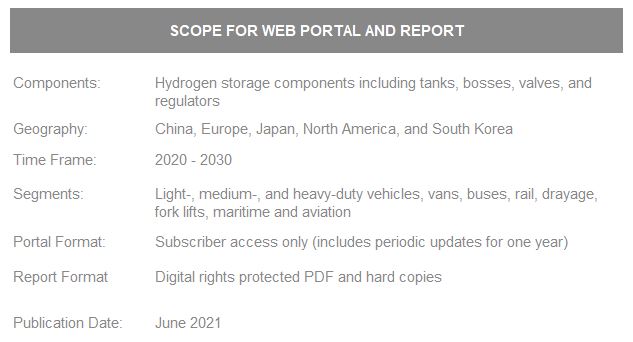- Home
- Industry Reports
- Hydrogen Storage for Transport
Hydrogen Storage for Transport

Major concerns about climate change have resulted in governments around the world investigating alternative energy sources for reducing carbon dioxide emissions. Europe, for example, has embarked on initiatives for promoting the use of hydrogen while the US with the November 2020 election of President Biden, is expected to make significant strides in this direction as well. China, Japan, and South Korea each have major government programs attempting to develop the use of hydrogen as an energy source.
While it has long been realized that there is no silver bullet for reducing carbon dioxide emissions from various segments such as transport, industrial and power generation, it has been realized that hydrogen can play an important role in this regard whether as an energy source for fuel cells or in conjunction with other renewable fuels (refer to the figures below, source: MDPI). For light-duty vehicles, The ITB Group believes that while pure electric vehicles will become a formidable competitive technology in the marketplace, hydrogen will still have an important role to play in the overall transport sector.

A number of traditional automotive suppliers and OEMs are looking to supply various transport segments with hydrogen-related products as a way to leverage the expected low returns offered by the light-duty vehicle market. Examples include:
- Toyota’s use of its light-duty fuel cell and electric technologies in electrifying Class 8 Kenworth trucks in the US and the use of hydrogen powered 25-ton delivery vehicles in Japan.
- The collaboration by JR East, Hitachi, and Toyota to develop a test railway powered by hydrogen.
- Daimler’s development of a fuel-cell powered semi with a range of up to 1,000 km together with other hydrogen powered truck offerings. A number of these trucks will use Daimler’s modular ePowertrain platform.
- Traditional automotive suppliers have also been making increased efforts to offer fuel cell componentry to various transport segments. Plastic Omnium and ElringKlinger recently announced a joint venture for fuel cell products. Bosch, Faurecia, Mann + Hummel, and Schaeffler, to name just a few, are striving to garner a share of the fuel cell market.
An important component for the various transport segments using fuel cells is the on-board hydrogen storage system. Traditional systems are pressurized (700 Bar), but other approaches may also be used, including cryogenic storage or solid storage such as metal hydrides. The ITB Group is offering this new report to analyze the market for on-board hydrogen storage that is stored by either compression or cryogenic compression approaches. The report will examine the various market drivers especially government regulations and investments in hydrogen technologies, the growing supply base, storage tank technologies including materials, and provide an understanding of the economics behind each solution.





